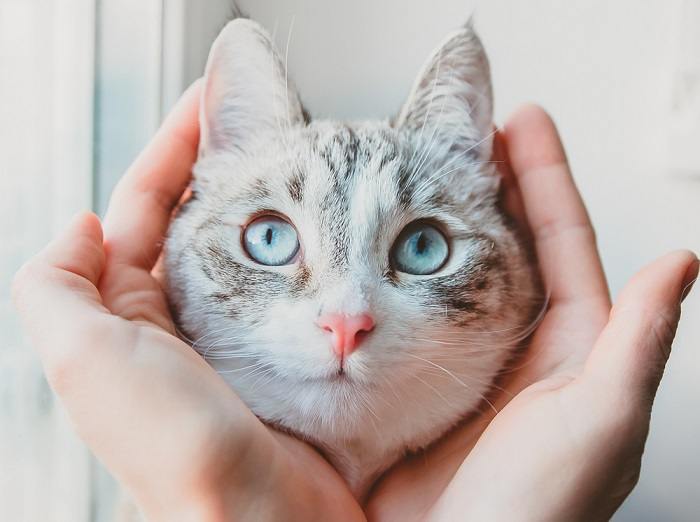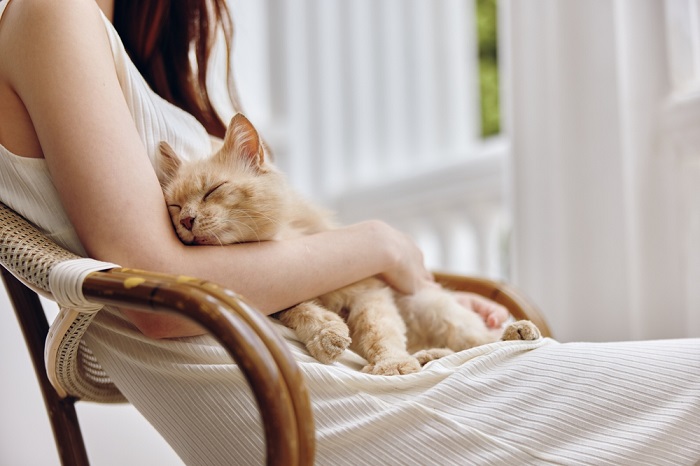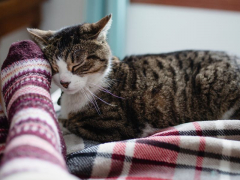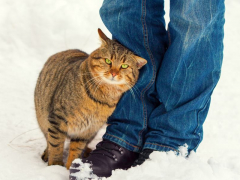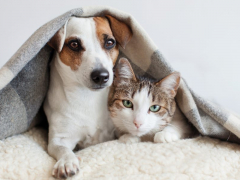For centuries, humans have lived with cats as fond companions. Having an animal companion offers many benefits, and the bond between a cat owner and their pet is not something to be underestimated.
You might have heard that that a cat’s purr lowers stress levels and blood pressure, helps with breathing difficulty, and even heals bones, but is this true? Can a cat’s purr really heal you? Let’s learn about cat purrs, including what they can and cannot do.
Key Takeaways
Cats purr when happy, but they also purr when they have sustained an injury, if they are giving birth, or when they are dying.
A cat's purr is the same frequency used in vibration healing, which has been shown to help with the repair of broken bones, injured joints, and tendons.
Though unproven, it's possible that a cat's purr might offer healing for the cat and to humans nearby.
Why Do Cats Purr?
A cat’s purr is thought to be an instinctive action, although there is some conscious control, too. Cats purr for various reasons. They use their purr to communicate. They purr when they are happy and content. They purr as a way to self-soothe. Cats purr when they are being petted, which usually works as positive feedback to the “petter,” who then carries on.
Kittens are altricial when born as they have their eyes shut and can’t hear for the first two weeks of their life, yet they start purring when they are just a few days old. They do this to let their mother know where they are so she can feed them.
Cats also purr when they have sustained an injury, if they are giving birth, or when they are dying. It seems a strange phenomenon for cats to allocate energy expenditure to purring in their last dying seconds.
The fact that all cat species all purr must mean that it is a useful tool for them as a species. A woman called Elizabeth von Muggenthaler of the Fauna Communications Research Institute in North Carolina did some research into why this would happen. She was interested in what caused the creation of the purr from an evolutionary stance. Muggenthaler concluded that cats’ purrs have self-healing properties and are a survival mechanism.
The Science Behind a Cat’s Purr
When cats sit on our lap and purr, they release chemicals called endorphins in their brain. Endorphins are hormones that are responsible for creating a feeling of happiness, contentedness, excitability, and other positive emotions.
Research has demonstrated that when a cat purrs, it causes a release of endorphins from humans, too. The health benefits of this complicated chemical reaction are endless. They include lowering blood pressure, decreasing stress levels, relieving pain, and improving general sense of well-being.
It is believed that the sound, including the tone and the vibrations, is responsible for the release of endorphins. Historically, sound has been used in different ways by healers to help people. It is thought that specific frequencies of sound have a positive effect on physical and mental health.
Also Read: Why Is My Cat Purring Constantly?
Healing Properties of a Cat’s Purr
As with a treatment technique known as vibration therapy, the vibrations of a cat’s purr could help encourage healing.
A type of healing called vibration therapy utilizes whole-body vibrations to improve the patients well-being and enhance their general health. It is used widely in the human world by a range of professionals.
It is thought that a cat emits a purr at the same frequency as these vibration therapy sounds, possibly having a similar effect. A cat’s purr frequency starts at around 26 Hz, which is the same frequency that scientists use to regenerate damaged tissue in vibration therapy.
Vibration therapy works by the principle that when the body is subjected to high-intensity pressures or weight-lifting exercises, the muscles and bones become stronger over time. Bone density improves and muscle mass increases.
Vibration therapy creates the same healing and reinforcement using low-frequency vibrations instead of intense high-impact activity. Theoretically, a cat’s purr could also help with healing. In a nutshell, the frequency of a cat’s purr might have a similar effect on the body as high-impact exercise does. Vibration therapy is believed to be able to help with:
- Swelling
- Infections
- Bone growth and healing
- Analgesia
- Muscle repair and growth
- Tendon repair
- Joint mobility
Broken Bones
The average frequency of a cat’s purr is somewhere between 25 Hz and 140 Hz. In one study, the sounds made by a cat at this frequency showed that the “purr frequencies correspond to vibrational/electrical frequencies used in treatment for bone growth/fractures, pain, edema, muscle growth/strain, joint flexibility, dyspnea, and wounds.”
It’s possible that the frequency of a cat’s purr might actually aid in bone healing, joint problems, and injuries to muscles, tendons, and ligaments, amongst other things. It is thought that vibrations made from cats purring can also aid with healing infections, pain relief, and reduction of inflammation.
Breathing Problems
In the same study mentioned above, it was noted that the frequency of cat purrs corresponded to electrical and vibrational frequencies used in the treatment of dyspnea (trouble breathing).
It has been noted that cats with respiratory conditions, especially those affecting the upper respiratory tract, often begin purring, which facilitates easier breathing. It has been suggested that a cat’s purr might have the same effect on a human with respiratory issues.
Headaches
Migraine sufferers have anecdotally reported feeling better after snuggling with a purring cat.
Severe headaches and migraines affect many humans. It is thought that a cat’s purr can aid humans in dealing with the pain and discomfort of headaches and migraines. It has even been suggested purring cats could help eliminate them.
There have been many anecdotal reports of humans saying their migraine went after they curled up next to their purring cat. If you are suffering from a migraine, it’s certainly worth a try.
Final Thoughts
Cats are not just adorable companions but might actually provide health benefits to us in our homes. Although we don’t know for sure how it all works, a cat’s purr might have a positive effect on a range of different things spanning across both our physical and mental well-being.
Also Read: Why Do Cats Purr?
Frequently Asked Questions
Do cats actually try to heal you?
It has long been believed that cats' purrs are associated with a unique healing ability for human bones and other tissue. Cats are incredibly intelligent and it is believed that they pick up on any issues with the humans they have formed strong bonds with.
Cats will frequently go and sit and purr on their owner if they sense they are upset or unwell. It might not be the case that they intentionally try to heal us, but rather that they sense something is wrong and wish to reconnect with us by being close to us, and the healing happens as a bonus.
Do cats purr at a healing frequency?
Yes, they do! Cats usually purr at a frequency between 25 Hz and 140 Hz. The frequency shown to help with the healing of bone, and other connective tissues in the body is exactly the same as that of a cat purr.
-
Muggenthaler, E. (2001). "The felid purr: A healing mechanism?" The Journal of the Acoustical Society of America, (110, 2666). https://asa.scitation.org/doi/10.1121/1.4777098
-
Adnan I Qureshi, M. M. (2009). Cat ownership and the risk of fatal cardiovascular diseases. Results from the second National Health and Nutrition Examination Study Mortality follow-up study. https://www.ncbi.nlm.nih.gov/pmc/articles/PMC3317329/
-
Muggenthaler, E. & Wright, B.. (2003). Solving the mystery of the cat's purr using the world's smallest accelerometer. 31.

